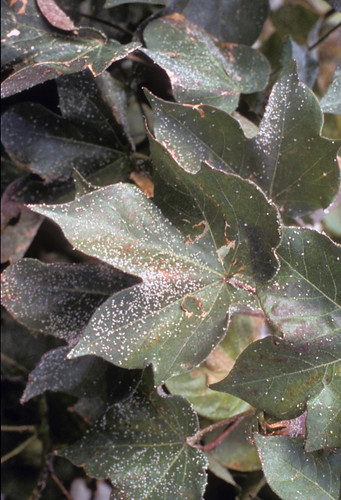
This post is part of the Science Tuesday feature series on the USDA blog. Check back each week as we showcase stories and news from USDA's rich science and research portfolio.
Some Arizona growers rely on broad-spectrum insecticides to treat whiteflies, but scientists with the USDA’s Agricultural Research Service (ARS) are studying the option of letting nature lend a hand in combating the costly pests.
The ARS scientists, working with a University of Arizona colleague, treated some cotton plots with whitefly-specific insecticides, and others with broad-spectrum insecticides.
The results showed that whiteflies initially died off at about the same rate in all the treated plots. But as the growing season continued, the plots that had received the broad-spectrum insecticides required additional applications for whiteflies. By contrast, the plots that received the whitefly-specific insecticide did not require additional applications.
ARS found that the first spraying with the whitefly-specific chemicals wiped out the whiteflies, but left the pests’ natural enemies unharmed. When the whiteflies tried to reemerge, their predatory enemies were waiting and ready to gobble them up.
The single application of the whitefly-specific insecticide on cotton “knocked down” the whitefly populations to levels where the predators could control the whiteflies for the rest of the growing season.
The tiny whitefly might not seem like a formidable foe of American agriculture, but one member of the family—the silverleaf whitefly, also known as biotype B of the sweetpotato whitefly—has left a multi-billion-dollar dent in the nation’s crops. Whiteflies feed on crop plants’ leaves and stems, and also are prodigious spreaders of plant viruses.
ARS scientists have been working for decades to help American farmers fight back, with everything from advice on just the right time to spray pest-controlling chemicals, to developing plant lines with some whitefly resistance and utilizing natural weapons such as fungi and plant extracts. The ARS scientists’ latest findings offer growers yet another option in the war against whiteflies.
